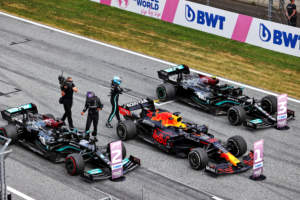Up Next

Carlos Sainz finished sixth in the Styrian Grand Prix, but time lost to the unusual situation of getting stuck behind Formula 1 world champion Lewis Hamilton having been lapped by him, as he put it, “compromised my race”.
But did it stop the Ferrari catching and passing McLaren driver Lando Norris for fifth?
Sainz didn’t go as far as saying he would definitely have caught and passed Norris had Hamilton not been in the way, but he was correct to say that it did hold him back and interrupted his chase of Norris.
The Ferrari driver ultimately finished six seconds behind Norris in sixth place after Hamilton allowed him back past, but he was frustrated that his charge was interrupted.
“It was a very strange scenario because I came out of the pits on very fresh hards and really looking forward to go and catch Lando, because we clearly had the pace to go and catch him,” said Sainz.
“Unfortunately, I had to let Lewis by because I got blue flags while I was getting the hards up to temperature, but from there on I expected Lewis to pull away.
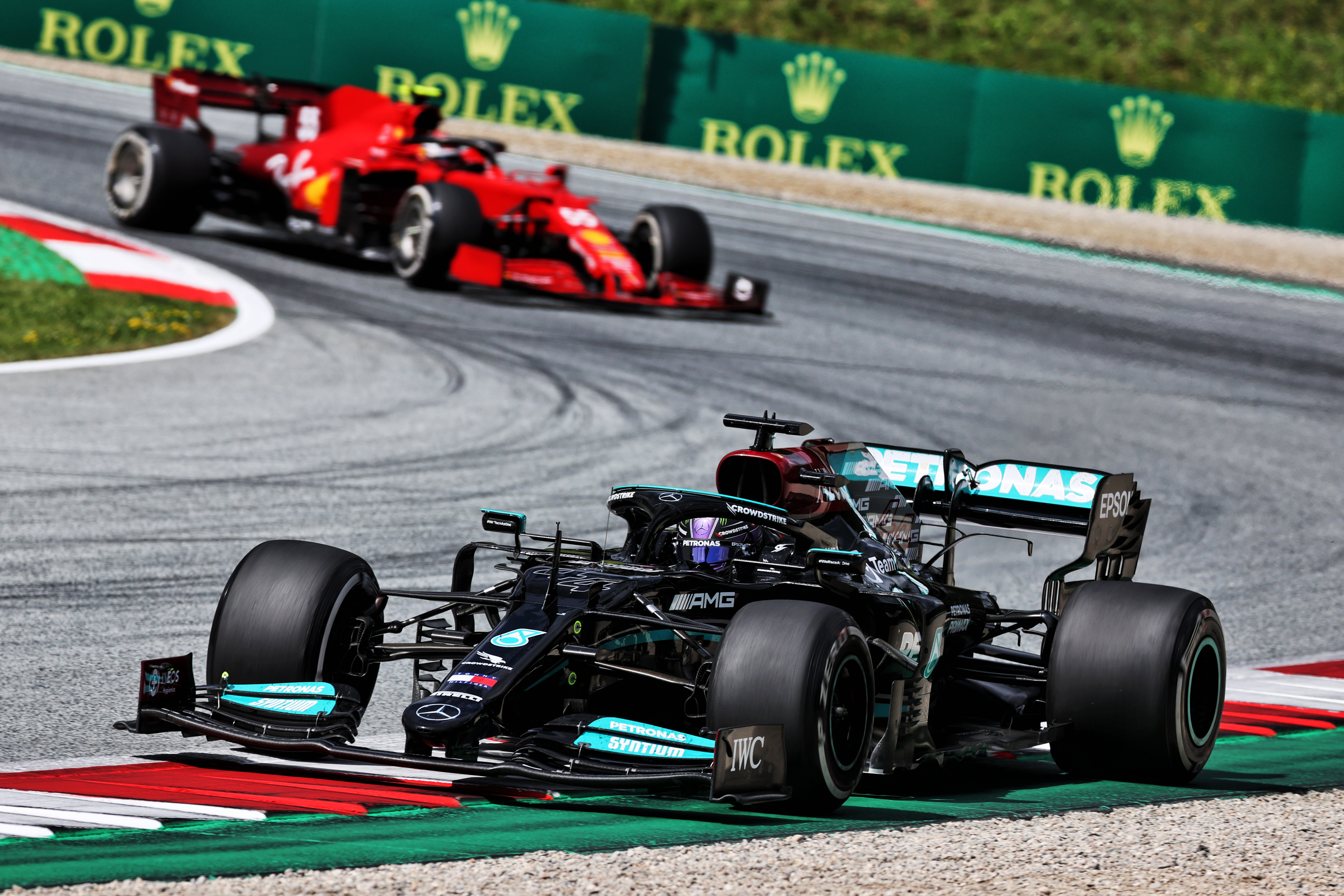
“For some reason, maybe Mercedes were struggling a bit with tyres today, I was quite a bit quicker than him.
“But I also didn’t want to do anything stupid. I know he’s fighting for the championship, he’s P2 in that race and I didn’t want to compromise his race either, but at the same time, I was getting a bit impatient because I could see that we were not catching Lando, and that he was not going to lap Lando.
“We found a way to transmit to Mercedes that it would be very nice of them if they could let us by. I got within DRS, and then they let us by and I could start chasing Lando again.
“But I did lose 15 laps behind Lewis that were quite important for us to at least mount the charge and put Lando under pressure. So those 15 laps behind him killing the front tyres trying to get within DRS were not ideal and probably compromised the rest of the race.”
While it’s difficult to quantify exactly how much Sainz’s race was compromised, Hamilton was a hindrance.
Having qualified only 12th, Sainz initially ran 11th in the first stint before moving up to 10th when Daniel Ricciardo’s McLaren-Mercedes suffered a brief power loss on lap seven.
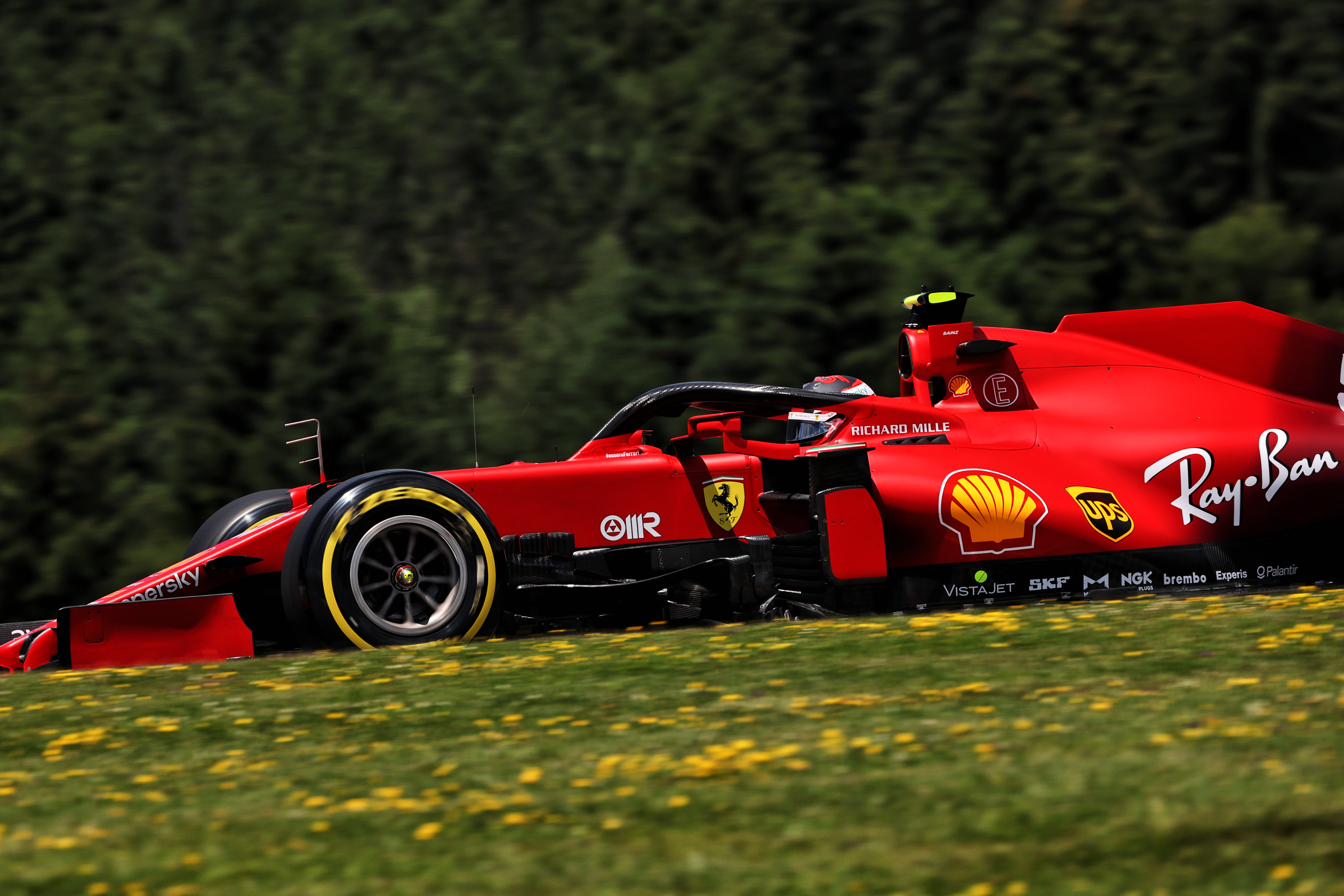
As he was unable to pass Yuki Tsunoda, Sainz and Ferrari decided to extend his starting stint on medium Pirellis, running all the way to lap 41 – along with Ricciardo the longest first stint of the race – before pitting for hards with 30 laps to go.
He rejoined in seventh place, ahead of Fernando Alonso thanks to the Alpine driver having to let leader Max Verstappen on the same lap, and behind Lance Stroll’s Aston Martin.
Sainz dispatched Stroll on the run out of Turn 3 on lap 44. He ended that lap 12.414s behind Norris and after a brief period of consolidation after reporting he had to cool off the tyres because he “ really pushed behind Stroll” he started the chase on lap 45.
On that lap, he was also shown blue flags because of second-placed Hamilton catching him, easing off on the approach to Turn 9 and letting the Mercedes driver lap him.
Sainz ended lap 46 13.256s behind Norris, with the gap essentially the same next time round – although Sainz did lose a trivial 0.031s.
Then he began to attack Norris, who was on the same hard-compound Pirellis but having stopped 10 laps earlier. From laps 48 to 53, Sainz gained at 0.382s. he ended lap 53 10.994s behind although this was the first time he complained that he felt Hamilton, who was struggling with his tyres, was holding him up.
Sainz then gained two seconds on Norris on lap 54 thanks to the McLaren driver having to let leader Verstappen past him. During lap 54, he was told he was on target to catch Norris on the last lap even before the time loss to being lapped.
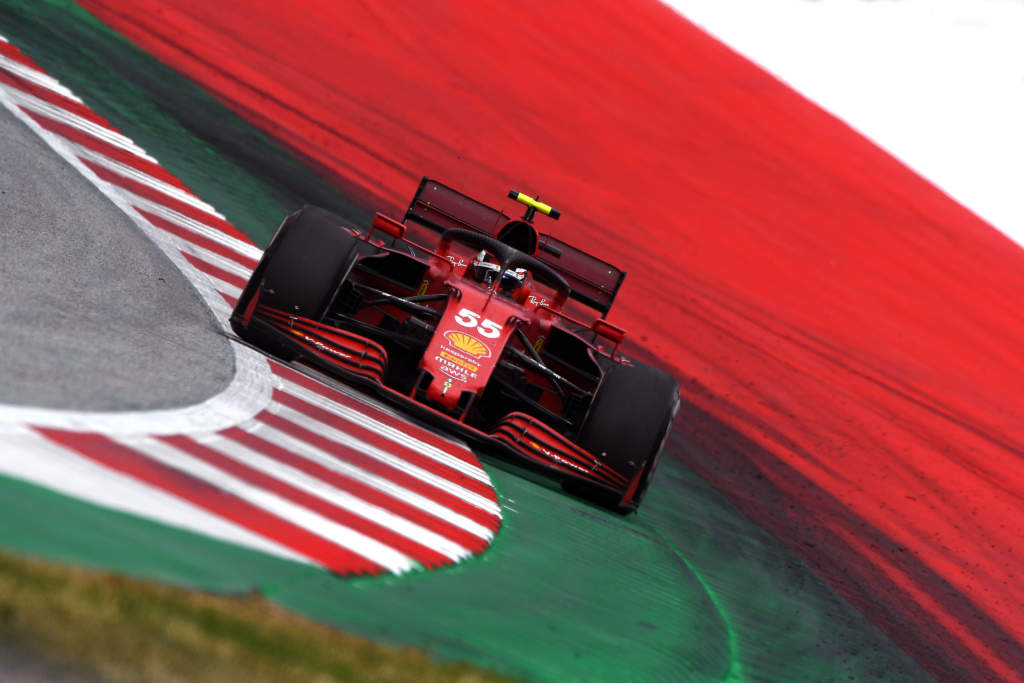
But Hamilton was now having a serious impact. On laps 55-58, Sainz gained 1.262s on Norris to run 8.482s behind, but his gains diminished each lap as Hamilton ahead exerted more of an effect. On lap 58, Sainz reported “it’s slowing me down, I could be a bit quicker than this”.
Two laps later, Ferrari told him to try to close to within DRS range of Hamilton, but Sainz reported the turbulence was making it difficult. He then suffered from some overheating of the front brakes – but in discussions with the pitwall, he said that he promised not to hold Hamilton up if the Mercedes driver let him past.
On lap 63, Sainz was told “you can try to unlap yourself”, warning that it would be very risky, but on the following lap he was told Hamilton had been told to let him past. Hamilton had indeed been told at the start of lap 64 that “we are happy to let Sainz go”, with Sainz unlapping himself into Turn 4.
At the end of that lap, Sainz was 7.463s behind Norris, taking the chequered flag six laps later 6.962s down.
Sainz was behind Hamilton from the end of lap 45 until Turn 4 on lap 64, even more than the 15 laps Sainz references. Initially, Hamilton didn’t cause too big a roadblock and the time Norris lost to being lapped on lap 54 ensured that the chase was still on.
But it was from lap 56 until the point he passed Hamilton that robbed Sainz of momentum, with the gap effectively frozen between him and Norris. Hamilton also had an impact before that, but that eight-lap period was the key.
So would Sainz have caught and passed the McLaren? Sainz made progress early on but at one stage he was told that a 1m09.0s pace would get him on terms with Norris on the last lap.
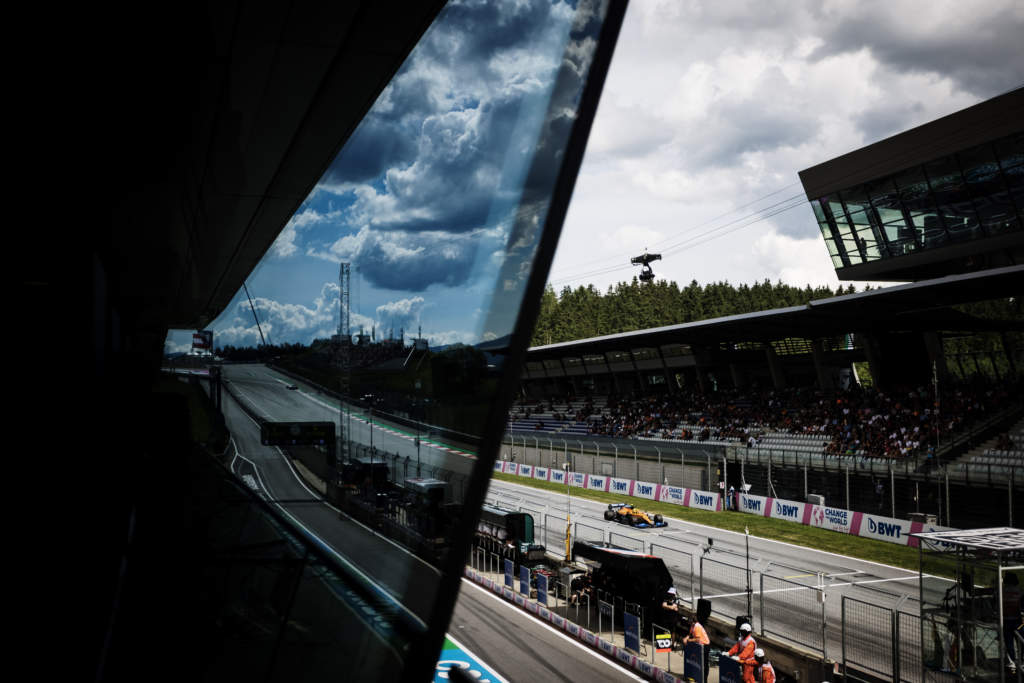
However, that would not have been enough. Taking the gap at the end of lap 54 – on which Norris lost that 2.2s thanks to being lapped by Verstappen – this pace would only have allowed Sainz to gain 3.5s on Norris based on the McLaren driver’s actual pace over the final 16 laps. That would have left him with 5.2s to find.
Sainz certainly could have gone quicker, but considering Norris wasn’t having to respond to Sainz once Hamilton was in play it seems likely he would have been able to keep just out of reach.
The pace of the Ferrari once in clear air after Hamilton let him past is irrelevant given the toll being behind Hamilton took in terms of the tyres. But even while the chase was on, it looked like the odds were against Sainz being able to catch and, crucially, pass Norris even if it was possible – especially as the McLaren driver didn’t have to extend himself in the race as it played out.
It’s impossible to know what pace Sainz could have produced unhindered by Mercedes. Even if it’s likely Norris would have stayed ahead, Sainz was right to say that it cost “at least a good fight”.





